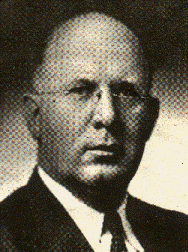James A. Colescott facts for kids
Quick facts for kids
James A. Colescott
|
|
|---|---|
 |
|
| 4th Imperial Wizard of the Knights of the Ku Klux Klan |
|
| In office 1939–1944 |
|
| Preceded by | Hiram Wesley Evans |
| Succeeded by | Samuel Green |
| Personal details | |
| Born |
James Arnold Colescott
January 11, 1897 Terre Haute, Indiana, United States |
| Died | January 11, 1950 (aged 53) Coral Gables, Florida, United States |
| Nationality | American |
| Spouse | Louise |
| Occupation | Veterinarian |
James Arnold Colescott (born January 11, 1897 – died January 11, 1950) was an American leader of the Ku Klux Klan. This group was known for promoting ideas of white supremacy, meaning they believed white people were superior to others.
Colescott held the top position, called Imperial Wizard, of the Knights of the Ku Klux Klan. In 1944, he officially closed down this version of the Klan. This happened because the group faced a lot of financial problems and owed money to the government for taxes.
Contents
Early Life and Career
James Arnold Colescott was born in Terre Haute, Indiana, on January 11, 1897. His parents were Frank Colescott and Minnie Olive Acuff.
He studied at a veterinary college in Terre Haute. After graduating, he worked as a animal doctor.
Colescott joined the local Ku Klux Klan group in Vigo County, Indiana. Over sixteen years, he moved up through the ranks of the organization. He eventually reached the highest position, becoming the Imperial Wizard.
Colescott passed away on his birthday, January 11, 1950, at the age of 53. He died at a U.S. Veterans' Hospital in Coral Gables, Florida.
Becoming Imperial Wizard
The previous leader, Hiram Wesley Evans, stepped down on June 10, 1939. Colescott then became the new head of the Ku Klux Klan. Before this, he had worked as Evans's chief of staff, which is like a main assistant.
Evans was pressured to leave because some of his views, like being against Catholics, were not popular with many Klan members. He chose Colescott to take his place. Colescott was officially made Imperial Wizard in a special ceremony. This event took place in Atlanta, Georgia.
There were rumors that Evans sold control of the Klan to Colescott for a large sum of money, possibly $220,000. However, this has never been confirmed. Colescott and another Klan leader, Samuel Green, did buy the Klan's main office building in Atlanta. They renamed it the Imperial Palace.
Efforts to Reorganize the Klan
As the new leader, Colescott tried to raise money for the Klan by selling some of its properties. He personally led efforts to reorganize the group. He traveled across the Northern United States, the Midwestern United States, and Florida. He hoped to attract more members and support.
A professor named Chester L. Quarles noted that Colescott was good at recruiting people for the Klan. He was also good at organizing things. However, he was not a very good speaker in front of crowds.
Colescott's tours in the Midwest were often met with suspicion. In the 1920s, the Klan in Indiana had been involved in a big scandal. This and other cases of "Klan corruption" made people in the Midwest view the organization negatively.
Despite his efforts, Colescott could not stop the Klan from losing members. This was mainly due to the Great Depression, a time when many people struggled financially. Even lowering the joining fee and making robes cheaper did not help much.
The Klan During World War II
The Klan's decline continued during World War II. Most Americans were focused on national security. The Ku Klux Klan lost its social influence, money, and political support.
The Klan's connections to groups that supported Nazism, like the German American Bund, hurt its public image. Also, events like the Detroit race riot of 1943 were damaging. Many Klan members stopped attending meetings and paying their dues.
From the late 1930s, there were reports of Klan members being involved in violent acts. These included beatings, kidnappings, and even murders. Colescott tried to improve the Klan's image. He told the press that he was against "flogging, lynchings, or intimidations." He also removed a pro-Nazi leader from the New Jersey Klan organization.
Dies Committee Hearing
In January 1942, Colescott was questioned by the Dies Committee. This committee was looking into un-American activities. Colescott was criticized for the Klan's alleged anti-Catholic views.
During the hearing, some committee members defended the Ku Klux Klan. They called it an "American institution." The committee also asked Colescott about the Klan's connection to violence. He claimed that terrorism was against the Klan's principles. He said that any members involved in such acts were former members or extremists who had been removed from the group.
Colescott also shared information about the Klan's membership and money. At that time, there were reportedly fewer than 10,000 registered members. In 1941, the Klan had only collected about $10,000 from joining fees and other dues.
After the Klan Disbanded
Even after Colescott officially closed down the national organization, many local Klan groups in the South continued to operate. These groups later helped the Klan make a comeback. It was reorganized for a third time under the leadership of Samuel Green in 1946. Green was a doctor from Atlanta.
In November 1944, some experts worried that the end of World War II might lead to the Klan becoming strong again. Meanwhile, Colescott himself retired and moved to Miami.
Images for kids


